Divine Motivation
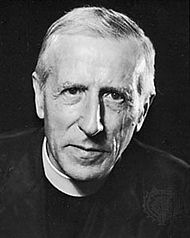
“Every encounter that brings me a caress, that spurs me on, that comes as a shock to me, that bruises or breaks me, is a contact with the hand of God, which assumes countless forms and yet always commands our worship. Every element of which I am made up is an overflow from God.”
–Pierre Teilhard de Chardin (French Jesuit Priest, Mystic, Paleontologist and Author, 1881-1955)
Wise Words About Leadership
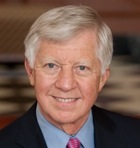
I was recently talking to someone about the difference between managers and leaders. Wherever you find yourself with a group of people who have to get something done, you can usually spot the leaders. They don’t necessarily have lots of stripes on their arms, distinctive epaulettes or shiny nameplates. For more than two centuries it has been known that around 5% of the population has a natural ability to lead. But more importantly others give them the permission to take charge. That 5% also has a number of other interesting characteristics that we shall talk about in other posts.
But there is more to leadership than natural ability.
Here are some wise words from someone who know more than most about successful leadership:
“Is leadership inherent or trainable? Both.
You are born with characteristics that reside deep inside you: drive, an ability to influence and motivate, perseverance. But you have to develop those qualities through actual leadership experiences.
A key quality is adaptability–facing unexpected obstacles, falling short of goals, reading the context, and changing your approach.
Absent that, leaders will continue to repeat mistakes and will not grow and develop. That leads me to the essence of the question “Why is it so hard to lead yourself?”
The answer, in my experience, lies in the differences between your idealized self–how you see yourself and how you want to be seen–and your real self. The key to growing as a leader is to narrow that gap by developing a deep self-awareness that comes from straight feedback and honest exploration of yourself, followed by a concerted effort to make changes.”
–William W. George (American Professor of Management Practice at Harvard Business School and Former CEO of Medtronic, Inc., 1942-) [Quoted in Fast Company, April 2007]
Get Motivated by Your Creativity
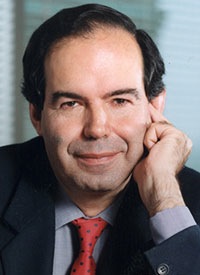
“Creativity is a great motivator because it makes people interested in what they are doing. Creativity gives hope that there can be a worthwhile idea. Creativity gives the possibility of some sort of achievement to everyone. Creativity makes life more fun and more interesting.”
–Edward de Bono (Maltese-born British Physician and Discoverer of Lateral Thinking, 1933-)

“Serious Creativity: Using the Power of Lateral Thinking to Create New Ideas” (Edward De Bono)
Pride

Over the centuries, oceans of ink have been spilled on the topic of pride and it has puzzled and perplexed philosophers, theologians and psychologists for centuries. It has been of particular interest to me since I moved to the United States: the English and American attitudes toward pride are very different animals. In England if someone congratulates you on a job well done, the expected response is to say, “Oh, it was nothing.” In the United States the person being congratulated will usually explain how much work went into the task and how pleased he or she is to be recognized. England expects modesty; America has since its founding encouraged and applauded self-reliance and personal excellence. On the other hand too much pride can breed narcissism and vanity, and nobody likes that.
Pride is clearly a complex emotion, unlike primary emotions like anger or fear.
Two psychologists – Jessica Tracy from the University of British Columbia and Richard Robins from the University of California at Davis, have been exploring the origins and purpose of pride.
They reviewed several recent studies on the nature and function of pride in the June issue of Current Directions in Psychological Science, a journal of the Association for Psychological Science.
Pride appears to be universal: in research using photographs of models with different facial expressions and body language, children as young as four, and people in many different cultures, including members of an isolated, preliterate tribe in Burkina Faso, West Africa, were all able to identify pride. What we do not know is how people at different ages and in different cultures respond to pride. It is clearly less acceptable in England than it is in the United States.
If it is universal, then what is its purpose? Tracy and Robins have tried a number of strategies to try and answer that question. They first asked people to come up with words that they associated with pride. People either link pride to such achievement-oriented ideas as accomplishment and confidence, which they term “authentic pride” or alternatively people connect pride to self-aggrandizement, arrogance and conceit, which they call “hubristic pride.”
People who tend to feel authentic pride were more likely to score high on extraversion, agreeableness, genuine self-esteem and conscientiousness. On the other hand, people who tend to feel hubristic pride were more likely to be narcissistic and, perhaps surprisingly, prone to shame. They also found that people who felt positive, achievement-oriented feelings of pride viewed hard work as the key to success in life, whereas hubristic people tended to view success as predetermined, due in part to their superior abilities.
Tracy and Robins argue that the primitive precursors of pride probably motivated our ancestors to act in altruistically for the good of the tribe. The physical display of pride would have both reinforced such behavior and signaled to the group that this person was worthy of respect. So individual authentic pride contributed in important ways to the survival of the community.
They speculate that hubris might have been a social “short cut:” a way of tricking others into paying respect when it was not warranted. Those who could not earn respect the old-fashioned way found tricks and techniques on how to look and act accomplished in order to gain status. Social cheaters developed a persona to compensate for their lack of abilities to achieve material success.
Chances are that any respect that they got would have been fleeting.
There is one other important point: in the United States with its healthy attitude toward pride, it does not have to be negative: pride can be a powerful motivator. Pride in performance, pride in working with gifted professionals and the pride of a heartfelt genuine acknowledgment can be worth more than rubies.
I do not mean the kind of Monday morning messages from the head of sales who tells everyone that they are “awesome.” That just pushes the cynicism button. But if the same sales manager send out occasional personal notes of congratulation that get copied in to everyone, the effects can be amazing.
Have you considered whether pride might be the missing motivator for you and your co-workers?
“Pride is as loud a beggar as want and a great deal more saucy.”
–Benjamin Franklin (American Author, Inventor and Diplomat, 1706-1790)
“Pride grows in the human heart like lard on a pig.”
–Alexander Solzhenitsyn (Russian Writer and, in 1970, Winner of the Nobel Prize in Literature, 1918-)
“I hope there is no pride in me. I feel I recognize fully my weakness. But my faith in God and His strength and love is unshakable. I am like clay in the Potter’s hands. I shall continue to confess blunders each time the people commit them. The only tyrant I accept in this world is the ‘still small voice’ within me. And even though I have to face the prospect of a minority of one, I humbly believe I have the courage to be in such a hopeless minority. I believe in the supreme power of God. I believe in Truth and, therefore, I have no doubt in the future of this country or the future of humanity.”
–Mahatma Gandhi (Indian Nationalist and World Teacher, 1869-1948)
“The proud man hath no God; the envious man hath no neighbor; the angry man hath not himself.”
–Bishop Joseph Hall (English Theologian, Philosopher and Poet, 1574-1656)
“What good is social class and status? Truthfulness is measured within. Pride in one’s status is like poison – holding it in your hand and eating it, you shall die.”
–Sri Guru Granth Sahib (a.k.a. Adi Granth, Sacred Text of Sikhism, completed in 1604)
“Pride is ignorance. A little possession of wealth, beauty, strength or intelligence intoxicates a man.”
— Sri Swami Sivananda (Indian Physician and Spiritual Teacher, 1887-1963)
Who’s In Charge of Your Brain?
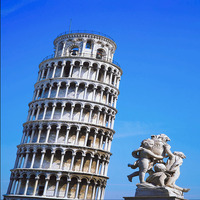
There has been a lot of discussion in the neuroscience community about the way in which different circuits in the brain are integrated. We know that the right and left sides of the brain normally operate together, and that most of the time the three major systems of the brain: reptilian, limbic and neocortical regions work together. However, we have also speculated that one of the causes for some neurological, psychological and psychiatric illnesses might be a result of “disconnections” between different regions of the brain. The idea that some brain regions may be uncoordinated goes back more than a hundred years, but was resurrected and developed quite brilliantly in the 1960s by one of my mentors, the late Norman Geschwind, who was one of the three smartest people that I ever met.
Now there is some new research that may have important implications for neurology and psychology.
Colleagues from Washington University School of Medicine in St. Louis have found strong evidence that there is not one but two complementary commanders in charge of the brain. It is rather like having two captains in charge of the same ship.
The two captains are networks of brain regions that do not consult each other but still work toward a common purpose: the control of voluntary, goal-oriented behavior. These behaviors include a vast range of activities from walking and talking, reading and deciding on a course of action. There are yet other systems that control behaviors that are usually involuntary such as control of the pulse rate or digestion.
Last year the researchers found that there are 39 brain regions that consistently became active before the brain goes to work on a task. They did this through functional magnetic resonance imaging (fMRI) scans that follow the oxygenation of the blood. As a region of the brain is activated, blood flow increases and we can work out which brain regions are contributing to a mental task. One of the keys to our mental capacity is the ability to recruit different parts of the brain as we need them. The previous research suggested that these brain regions create task sets: plans for using the specialized talents of various brain regions to achieve a goal. Let me give you an example.
Read the word: CAT
You can do many things with that word: make a mental image of a cat, read it aloud, make rhymes or lists of words and so on. And each of those activities involves a different set of circuits in the brain. The person with good powers of attention and concentration is able to mobilize and coordinate more of his or her mental resources than the person who is less focused on a task.
In this new study the researchers used a different brain scanning technique called “resting state functional connectivity MRI.” Volunteers were asked to relax while their brains are scanned instead of working on a task.
They then used graph theory, a branch of mathematics that visually graphs relationships between pairs of objects to work out how different brain regions are coordinated. This mathematical technique is rather like the party game Six Degrees of Kevin Bacon, in which you use paired connections to go from one actor or actress to another until you’ve identified a chain of connections linking Kevin Bacon and another actor, actress or movie that wasn’t immediately obvious.
They were able to identify pairs of brain regions where blood oxygen levels rose and fell roughly in synch with each other, implying that the regions most likely work together. What they found was two separate systems. Each system had multiple connections to other regions in its own team, but they never connected to regions on the opposite team.
Having established the existence of two control networks, the next task was to work out their roles. One network – the “cinguloopercular network” – was linked to a “sustain” signal. It turns on when you start doing a task and stays constant while you do it. When you are finished it switches off.
The second is the frontoparietal network that is consistently active at the start of mental tasks and during the correction of errors.
In some senses this is not too much of a surprise. Many systems of the body have multiple control systems. I have often talked about the scores of systems involved in the control of body weight, which means that a dietetic approach directed at only one system is doomed to failure. If the body thinks that it is starving other systems jump in to slow your metabolism, reduce your activity level and make you crave certain foods.
Another good example is body temperature. Your temperature is regulated by several independent factors including your sweat glands, metabolism and activity level. If one of them goes wrong, other systems will try and compensate. When one controlling factor goes awry, others can try to compensate. The controls of your weight and body temperature are known as complex adaptive systems, and they are found not only in biology, but also in ecology, economics and atmospheric dynamics. We study them using an approach called network dynamics.
The findings may help our efforts to understand the effects of brain injury and develop new strategies to treat such injuries.
They may also help us understand problems like goal-directed behavior and human motivation.
If only one of the two systems has agreed that you need to go out and exercise, it may help us design new strategies to help you and explain why some approaches to, say, diet and exercise, are more effective than others.
Groundbreaking stuff!
Yoga Improves Concentration and Motivation
 We know that hatha yoga can improve balance and flexibility, and there has been evidence that it can have more profound effects on the body and mind.
We know that hatha yoga can improve balance and flexibility, and there has been evidence that it can have more profound effects on the body and mind.
Now some new research confirms something else that we have suspected: it can also lessen anxiety and improve concentration and motivation in as little as eight weeks.
The research was presented in New Orleans at the 54th Annual Meeting of the American College of Sports Medicine. Researchers from California State University in San Bernardino wanted to quantify the benefits of yoga beyond just strength and flexibility.
The investigators tested 84 students during the second and eighth weeks of four, 10-week hatha yoga classes at the University. 93% of the participants were female, 45 percent were Hispanic, 35 percent “Caucasian,” seven percent African-American, and two percent Asian. The students averaged 24 years of age; most had at least three months of consistent yoga experience prior to the class. (Why the quotes around “Caucasian?” I just don’t like the term. I am white and not from the Caucasus. I am also a nit picky Virgo…)
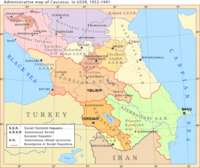
Two weeks and again nine weeks into the class, participants completed three standard assessments to measure their concentration, motivation and anxiety level. The results were dramatic. In just eight weeks of practice they measured significant increases in all three areas.
The research will be expanded to include more men, and also to see how these findings can be applied to sports and clinical treatment.
The researchers have opened up a fascinating field for further study, and I shall continue to report on the data as it comes out.
Motivational Interviewing and Exercise

Researchers from Germany have
re-visited the interesting topic of the association between aerobic
exercise and psychiatric disorders, and presented their work in a
poster (NR20) at the 2007 Annual Meeting of the American Psychiatric
Association in San Diego, California, this morning.
There is good evidence
that exercise can help people with depressive and some other
psychiatric disorders. Unfortunately, like everyone else, people with
psychiatric problems have trouble in developing regular exercise habits
or staying with the program. The mood problem itself may stop them, or
the physical pain that so often accompanies depression.
223 people were screened at the time of admission to hospital and 82
decided to participate. That is a disappointing but unsurprising rate
of participation. The patients were offered a three-month
running/walking program that they could continue after discharge. They
all had weekly meetings that included exercise-related psychoeducation,
stretching and 40-50 minutes of aerobic exercise.
In addition the experimental group received brief interventions using motivational interviewing,
a specific technique to foster changes in behavior. Motivational
interviewing is a client-centered non-judgmental and
non-confrontational appraoch to change that attempts to increase
peoples’ awareness of the potential
problems caused, consequences experienced and risks faced as a result
of the behavior in question. Alternatively, therapists help clients
to try and envision a better future and to become increasingly
motivated to achieve
it. These strategies seeks to help clients think differently
about their behavior and ultimately to consider what might be gained
through change.
In people who had the motivational interviewing, the completer rate
was 78%, compared with 33% in the control group who just had the
psychoeducation, stretching and exercise.
The patients’ initial self-assessments concerning the importance and
efficacy of regular exercise for their individual recovery did not
predict compliance.
This confirms that motivational interviewing is highly effect in
helping people with mental illness initiate and continue with a regular
exercise program.
This new research adds to a body of evidence that has shown that motivational interviewing can be helpful in the treatment of obesity, weight management in women with type 2 diabetes, exercise in women with fibromyalgia, quality of life in people with chronic heart failure and physical exercise in long-term cancer survivors.
It may also be very helpful in people who need to exercise yet have no psychiatric problems: any of us!
Motivation, Manipulation and Empowerment

It would be good to know how many people really change after they’ve done one of those motivational seminars. Undoubtedly some do, but most do not.
This stands in stark contrast to inspirational speakers who often change people for life.
If you try to “motivate” an adult to change their behavior, after an initial brief period during which they get excited about what they are learning, they will most likely resist what they perceive as manipulation. People who do change normally don’t maintain the new behavior because the primary motivation was external.
If we are trying to help people eat a more healthy diet, or take some exercise, research has shown that the best way to initiate and maintain a new behavior is for an individual to have an expert who can teach, guide and facilitate. That together with a peer supporter: someone who will help you along, and diet and exercise with you. You know yourself better than anyone else ever can.
The trick is to work with someone who may know a bit more about psychology, physiology and metabolism and can use that information to help you to develop a personalized program. The expert can help you move forward by asking question to identify your own motivators, locus of control (do you feel that you are the captain of your own ship, or do you believe that you are more a plaything of fate?) ego-fears, reward system and action style (do you like to break tasks down into small steps and work at one at a time in sequence, or do you like to work on one task, then pull out something else that like to do and do you have some other way of getting things done?)
There was recently a study from the UK that showed that the behavior of children with special needs was improved by a good diet and regular exercise. No surprise there. But the problem is this: how do you maintain the diet and exercise programs?
I spent many years working with young people with weight problems and/or diabetes. They usually also had some mood or behavioral problems. Issuing young people with a great long list of “Thou shalt nots” is guaranteed to backfire: youngsters are rebellious anyway. Tell them all the things that they can’t do, and force them into eating a certain way, and you will have a rebellion on your hands that will make the Storming of the Bastille look like a picnic. It is much better to come to an agreement that may include having days on which they can “cheat.”
A while ago I wrote about the way in which psychologists have moved beyond the pain/pleasure dichotomy as the major motivators of human behavior. Rewards and punishments are called extrinsic motivators, while intrinsic motivators are a composite of genes, learning, environment and temperament. I gave a few examples of motivators culled from the current literature:
- Clarity of vision
- Encouragement
- Personal engagement
- Recognition
- Pride
- Free flow of energy and information
- Appropriate reward systems (money is often not the best one!)
- Personal and group expectations
- Creating shared goals
- Transpersonal motivation: Inspiration and leaving a legacy.
I had several excellent questions: couldn’t people practice altruism because it gives them pleasure? Yes, they could, but that is not what the research data shows. Though people can derive pleasure from all kinds of things, the evidence base suggests that human motivations are far more complex.
It has also become possible to visualize regions of the brain while people are engaged in different tasks, and altruism does not seem to engage most of the circuits that we normally associate with pleasure or pain.
Yet more evidence that pleasure and pain and far from being the only – or maybe even the main – motivators of human behavior.
“No one ever does anything from a single motive”
–Samuel Taylor Coleridge (English Romantic Poet, 1772-1834)
“No one can motivate you, until you motivate yourself.”
–Jawaharlal Nehru (Indian Politician and Statesman, 1889-1964)
“Motivation is everything. You can do the work of two people, but you can’t be two people. Instead, you have to inspire the next guy down the line and get him to inspire his people.”
–Lee Iacocca (American Businessman and Former CEO of Chrysler, 1924-)
“Motivation is what gets you started. Habit is what keeps you going.”
–Jim Rohn (American Businessman, Author, Speaker and Philosopher)
“Do not brood over your past mistakes and failures as this will only fill your mind with grief, regret and depression. Do not repeat them in the future.”
–Sri Swami Sivananda (Indian Physician and Spiritual Teacher, 1887-1963)
“The need for devotion to something outside ourselves is even more profound than the need for companionship.”
–Ross Parmenter (American Expert on Mixtec Documents, Journalist and Music Reviewer for the New York Times, 1920-1999)
“He who wishes to secure the good of others has already secured his own.”
–Confucius (Chinese Philosopher, 551-479 B.C.E.)
Reducing Your Cancer Risk
“The doctor of the future will give no medicine, but will interest his patients in the care of the human frame, in diet, and in the cause and prevention of disease.”
— Thomas Alva Edison (American Inventor, 1847-1931)
I am sure that you will agree that prevention is better than cure. And this is a good time of the year to review where you are in your life and what you want or need to do for yourself and your loved ones.
According to a study reported in the Lancet in November 2005 more than one third of cancer deaths are attributable to nine modifiable risk factors.
To evaluate exposure to risk factors and relative risk by age, sex, and region, the investigators analyzed data from the Comparative Risk Assessment project and from new sources, and they applied population-attributable fractions for individual and multiple risk factors to site-specific cancer mortality provided by the World Health Organization.
Of the seven million deaths from cancer worldwide in 2001, approximately 2.43 million (35%) were attributable to nine potentially modifiable risk factors. Of these deaths, 0.76 million were in high-income and 1.67 million in low- and middle-income nations; 1.6 million were in men and 0.83 million deaths were in women.
Smoking, alcohol use, and low consumption of fruits and vegetables were the leading risk factors for death from cancer worldwide and in low- and middle-income countries. In low- and middle-income regions, Europe and Central Asia had the highest proportion (39%) of deaths from cancer attributable to the nine risk factors studied.
For women in low- and middle-income countries, sexual transmission of human papilloma virus (HPV) was also the leading risk factor for cervical cancer. Smoking, alcohol use, and overweight and obesity were the most important causes of cancer in high-income countries.
Between 1990 and 2001 mortality from cancer decreased by 17% in those aged 30 to 69 years and rose by 0.4% in those older than 70 years, according to the authors, but this decline was lower than the decline in mortality rates from cardiovascular disease for men and women. The decline in mortality in men was largely due to reduction in mortality from lung, prostate, and colorectal cancers, while in women, lung cancer increased in the 1990s, and death rates for breast and colorectal cancer decreased. An article published almost ten years ago in the journal Cancer Epidemiology, Biomarkers, and Prevention, it was estimated the worldwide attributable risk for cancer to infectious agents as 16%.
The nine factors were:
- High body mass index
- Low fruit and vegetable intake
- Physical inactivity
- Smoking
- Alcohol abuse
- Unsafe sex
- Urban air pollution
- Indoor use of solid fuels
- Injections from healthcare settings contaminated with hepatitis B or C virus
This all makes good sense, but it is good to see high quality research in reputable journals confirming what we suspected. The research also gives us further compelling reasons for taking a good look at our lifestyles and hopefully the motivation to do something to improve them. And in the case of air pollution and injection of contaminated products, to be active in getting things cleaned up.
“Keep your own house and its surroundings pure and clean. This hygiene will keep you healthy and benefit your worldly life.”
— Sathya Sai Baba (Indian Spiritual Teacher, c.1926-)
“Length of life does not depend so much on a good physical constitution as it does on the best use of the six non natural things, which if we rule aright, we shall live long and healthy lives: to divide the day properly between sleep and waking; to adjust our air to the needs of the body; to take more or less food and drink according to our age, our temperament and whether we live an active or inactive life; to take exercise or rest according to the quantity of food and whether we are lean or fat; to know ourselves and be able to rule our emotions and subject them to our reason. Whoever handles these wisely will live long and seldom need a doctor.”
–Giorgio Bagliivi (Italian Physician, Pathologist, Researcher and Author of De Fibra Motrice, 1669-1707)
“The best doctor prevents illness, a mediocre one treats illnesses that are about to occur, and an unskilled one treats current illnesses.”
–Chinese Proverb








